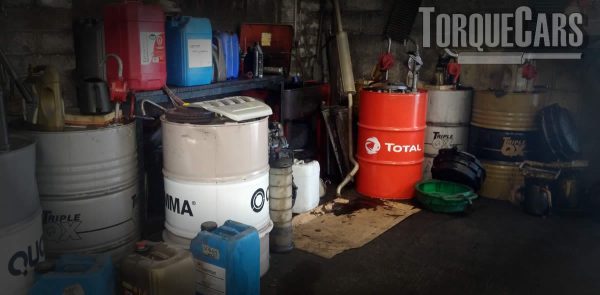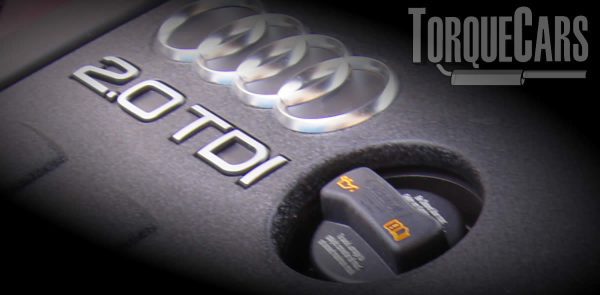What Happens When You Overfill A Car With Oil?
"A look at the problems caused by too much oil in your engine."
Oil is vital for lubricating internal combustion engines, however like everything else, too much oil is not good for the engine.
We'll also discuss the best methods for removing excess oil from your car.
First off it would be helpful to know how to check your car's oil levels. You'll get away with a little bit over the top max mark in most engines, so there is no need to be paranoid.
Please watch our video which covers Overfilling engine oil. Be sure to keep up with our latest YouTube content and subscribe.
How To Check Oil Levels?
While this may sound quite simple, you’ll be surprised to know that many people don’t know how to check the oil level of their vehicle.
Here are the steps using which you can check the oil level of your car:
- Ensure that the vehicle is parked on a level surface and is switched off;
- The oil heats up when the vehicle is operational and coats the internal components so will take a while to run back to the sump and cool down, so you must not check the oil any time soon after driving it;
- Locate the dipstick of your vehicle. Its location varies from one vehicle to another depending upon the layout of the engine bay. The stick in some cars has a coloured top to make it easier to locate it. However, if you still face difficulty in finding it, you can consult the owner’s manual;
- Grab a tissue paper and pull out the dipstick slowly so you don’t spill the oil everywhere. Wipe the end of the dipstick with a piece of tissue paper to clean the oil off it;
- Now you will be able to see the empty and the full marks on the dipstick. If you don’t know which mark indicates what, it is simple. The lower mark shows the empty mark whereas the top mark shows the top level of the oil;
- Now reinsert the dipstick into its place and again pull it out slowly;
- This time you shouldn’t clean it with a paper towel rather now you should check the level of oil;
- If it is below the top level, it means that you need to refill the oil. However, if the oil level is higher than the full mark, it means you have overfilled oil in your vehicle which needs to be drained out.
So here is what happens when you overfill a car with oil.

Frothing Of Oil
The oil that is put in a car’s engine rests in an oil pan while the car is not in operation. However, by overfilling, the level of oil in the pan is raised to an abnormal level.
As a result of this, the oil comes in contact with the crankshaft. As the crankshaft moves at high speeds, it leads to aeration. This causes frothing of the oil and it turns into a foam-like substance that is quite thick.
The bubbles created also compress, raising the oil pressure and reducing the flow rate of oil. Less oil is present on the wear surfaces because of this.
Thus, the purpose of the oil, which is to lubricate the engine parts, is badly affected. Due to this lack of lubrication, such parts undergo increased wear and tear.
Crankshaft Damage
The crankshaft is spinning at speeds approaching 6000rpm, and is slapping into the oil. At the very best this is sapping engine power, but as we all know when you slap your hand on water you will get an impact occurring.
This can actually cause substantial vibrations and damage to the crank and pistons in extreme cases.
High Oil Pressure Causes Leakages
By overfilling the oil in the car, its pressure becomes too high. The oil thus attempts to escape the engine through various seals and gaskets and thereby damages them.
When they get damaged, oil starts leaking from the vehicle which not just causes a mess in your driveway but also requires expensive repairs and oil refilling.
Damaged Spark Plugs
The excessive oil that has been put in a car’s engine often finds its way to the spark plugs.
As such parts are not designed to operate while being immersed in oil, their performance and life are also affected.
Affects The Catalytic Converter
The excessive oil can also get into the vehicle’s catalytic converter and affect the working of this part as well.
These are expensive parts and thus the last thing you would want to be damaged as a result of an oil overfill is the catalytic converter.
How To Drain Excess Oil?
If you have put too much oil in your car, it’s time to drain out the excess amount. There are two methods for this.
Getting A Fresh Oil Change
The first and simplest method is to get a fresh oil change. Professional oil change service providers know how much oil your vehicle requires and thus you just have to visit such a service centre where the staff will remove the complete oil out of the vehicle through the bottom end and reinsert new oil with the proper level.
This, however, is an expensive option and you might not be willing to go to such an extent just to drain the excess oil.
That’s why we have another method as well, but if you want to save some money, you better be willing to get your hands a bit oily.

Removing the Sump Plug to Drain
This can be tricky although it seems the easiest and most logical solution.
To do this you'll need to place an oil catch can under the sump plug, and loosen the plug.
Beware that you'll lose a lot of oil and it's quite hard to pop the sump plug back in whilst the oil is flowing.
Typically you'll only need to drain half a litre of oil and this amount will stream out in a matter of seconds so you'll need to be quick.
The other issue is that you should ideally always replace the sump plug washer, and it will take too long to do this and get the plug back on.
If you use this method it is best to fully drain the oil, and then top it up again from the catch can to the correct level.
Unscrewing The Oil Filter
On a first look you might conclude that your oil filter will typically hold around 300-500ml of oil, so unscrewing this and pouring out the oil inside seems sensible.
However oil filters are rarely housed vertically, and the horizontal or angle they are at means they hold much less oil as it flows out again fairly easily.
The oil filter is usually way above the sump, so this is not a great way to try to drain off the excess oil.
Using An Air Hose & A Syringe
The second method of draining the excess oil out of your car’s engine requires you to pull out the dipstick and insert an air hose in its place.
After doing so, attach a syringe to the other end of the air hose but ensure that the connection is airtight to avoid oil splattering.
Once you pull the syringe handle back, it will create air pressure in the hose which will pull the engine oil out slowly. You’ll be able to see the oil coming out through the air hose.
So, when the oil reaches the end of the air hose, you should pinch the hose to prevent the oil from coming out further from this point.
Repeat this process each time you disconnect the syringe from the air hose and continue draining out the excess oil in this manner.
You could also run a high pressure jet of air across the bottom of the hose and this will create suction within the tube allowing you to syphon off the oil.
DO NOT SUCK! The oil contains plenty of nasty additives which can cause harm if inhaled, ingested or even when it comes into contact with skin.
Important Note
Be careful not to remove too much oil. Otherwise, you’ll have to put back new oil in your car.
It is pertinent to mention here that you can also use a suction pump for this process.
However, finding a suction pump might not be possible for everyone which is why we vouch for the air hose and syringe option due to its effectiveness and low cost.
How To Avoid Overfilling A Car With Oil?
The easiest way to avoid overfilling your car with oil is to get it filled by a professional. However, if you like to do stuff on your own, then here are a few tips which can be followed to avoid this situation in the first place:
- Read the owner’s manual to find out how much engine oil your car requires and get a pack of roughly that size so you don’t accidentally put more oil;
- Keep adding small quantities of oil at regular intervals and keep observing the level with the dipstick. Once you reach near the full mark, reduce the size of the increments.
If you follow step number 2 just once after getting a new car, you can note down the level of oil that is ideal for your vehicle.
Buying oil in 1 litre containers makes it easier to pour and judge the amount of oil in it. You could always pour oil into a smaller 1 litre container and use this to fill the car.
Most oil we buy here in the Uk comes in 5 litre bottles, and most cars I've owned seem to take around 4 and a half litres of oil.
So with this in mind you could, for example, take a 5 litre oil can drain off half a litre and you'll know you have 4.5 litres left for your car.
Thus, the next time you won’t have to go through this agonizing process.
Please Check out my YouTube channel, we're regularly adding new content...
PLEASE HELP: I NEED YOUR DONATIONS TO COVER THE COSTS OF RUNNING THIS SITE AND KEEP IT RUNNING. I do not charge you to access this website and it saves most TorqueCars readers $100's each year - but we are NON PROFIT and not even covering our costs. To keep us running PLEASE Donate here
If you liked this page please share it with your friends, drop a link to it in your favourite forum or use the bookmarking options to save it to your social media profile.
Feedback - What do You Think?
Please use our forums if you wish to ask a tuning question, and please note we do not sell parts or services, we are just an online magazine.
Help us improve, leave a suggestion or tip
Please watch this video and subscribe to my YouTube channel.
2 Responses to “Overfill Oil Problems”

 Click to accept YouTube Cookies & Play.
Click to accept YouTube Cookies & Play.
Hi Waynne With my track day Honda FN2 CTR I overfill to app 1/8th of an inch or so if an inch above the max level as I need to ensure that there is sufficient fluid around the pump inlet in high speed cornering. Have been doing this forever with no ill effects or smoke.
Hi buddy I’ve heard of a few others doing this on the K series, do you know if this still is ok on the ones with the balance shaft oil pumps?
Most engines will get away with a mild overfill like that, but there are a few out there that can be quite temperamental if the oil level is too high.